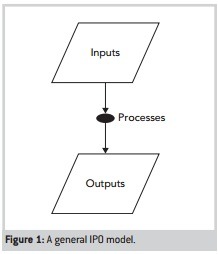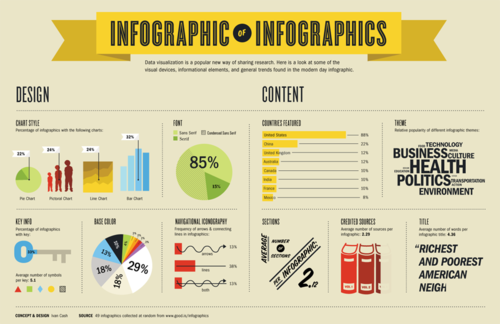The phrase project management is being used now more than ever before. So much so that Project Management has transformed into a profession. In recent years, many organizations have changed focus to become more innovative, to experiment with new markets and products, and employees are becoming more cross-functional due to the rise of the projects. As projects are increasing in relevancy, and becoming more commonplace in rapidly changing environments, the demands on Project Managers to deliver more quickly and efficiently are also increasing. Bruce Dearstyne’s, “Smoothing the Turbulence: Project Management Strategies for the Changing Workplace” addresses the demands placed on Project Manager’s and discusses strategies to ensure successful project management.
The purpose of Dearstyne’s work is to help Project Managers be more effective and efficient when it comes to completing projects. He identifies and describes seven focus areas for Project Managers:
- Align Projects with Business Objectives/Priorities
- Apply Intense, Hands-On Management Skills
- Accelerate Project Work
- Incorporate Risk Management into Project Management
- Practice Agile Project Management
- Incorporate Social Media Technologies
- Deliver/Measure Project Results
All of the strategies Dearstyne identified can lead to success, but Accelerate Project Work is the most fundamental strategy of the seven for project success.
When Dearstyne explains Accelerate Project Work, he points out that in fast-paced constantly changing environments of business today; Speed is of greater value than quality. Project Managers need to be able to adapt to this need for speed if they are to progress in the profession. According to Robert Wysocki, the best way to Accelerate Project Work is to:
1. Emphasize empowerment accompanied by accountability and responsibility.
2. Make exceptions to defined processes when justified.
3. Resolve issues and problems on the spot through conversation.
4. Promote information sharing via electronic communications rather than meetings.
5. Make meetings purpose-driven with an agenda and time limits.
Essentially, the strategies suggested come down to people on the project team. This is why Accelerate Project Work is so important. It focuses on the people on a project team. When it comes to projects we typically think of completion and success in the stages of a project. We tend to view project completion in three steps: inputsàprocessesàoutputs (IPO Model Figure 1). We think, “What’s the next step on the timeline? How do we do it? What are the sub-tasks?” We do not typically think about how we can be more efficient as a team to accomplish the tasks on-time and within budget.

The X Model is a more detailed IPO model and provides a more realistic view of the situation of a project because it considers the systematic aspect as well as the human aspect. “The inputs refer to the situation at the start of the project or to a situation prior to the present situation, while the outputs are related to the present situation” (Andersen, 2010). All of the activities that take place within the project (meetings, e-mails, drawing, building, etc.) are the work processes of the model. The Factual part of the model represents “the more formal or structural part of the project” (Andersen, 2010), and the Personal part of the model represents “the attitudes, needs, knowledge, skills, and experience of the members of the project organization, and their relationships to one another and to others” (Andersen, 2010)

This model is a great tool for Project Managers to help them consider the whole team and how they will contribute to each part of the project. By providing this overview of two systems, that of the technical tasks and the people involved, can potentially help projects be completed more quickly because Project Managers can visualize how to use their team for a set task.
Ultimately though, when working with a group of individuals it comes down to the Project Manager to bring them together to function as one unit— a team. So in order to Accelerate Project Work, Project Managers need essential leadership skills and the ability to understand the stages of a team. The stages of a team are forming, norming, storming, performing (Adams & Anantatmula, 2010). Forming is when individuals come together for a common cause. Norming is when the culture of those individuals together becomes apparent to everyone in the group. Storming is the term to describe when the individuals begin to know and understand each other better. It is the stage when power struggles and conflict seem to arise. Performing is the stage when the individuals become united by a goal, begin to work together and finally become a team.
Leadership skills are necessary to understand that there are differences among the team members, to understand that everyone on the team is going through the change of adapting to this new “culture”, and guiding them through the change, so they perform well at the end of the project.
Tools like the X Model and suggestions for project success are plentiful and would be able to help any project because pretty much everything involves technical systems and people. But awareness without implementation ability holds no weight. If the Project Managers are able to apply Wysocki’s suggestions to the personal aspects of the X Model, the team members may feel more motivated to perform at a higher level. Higher level performance often means a higher quality product for the business. If the team finishes the project more quickly it also gives the business more time to gain customer feedback about how the product could be improved. A higher quality product for the business could lead to the acquisition of new customers, and happier existing customers. A Project Manager that can understand that the people affect the systems will be able to understand how to use the X Model and Wysocki’s suggestions to Accelerate Project Work. It is something so simple and so obvious. But it is also an art, something that is easier said than done.
What do you think? Of the seven focus areas for project management success suggested by Dearstyne above, which one is vital to project success







